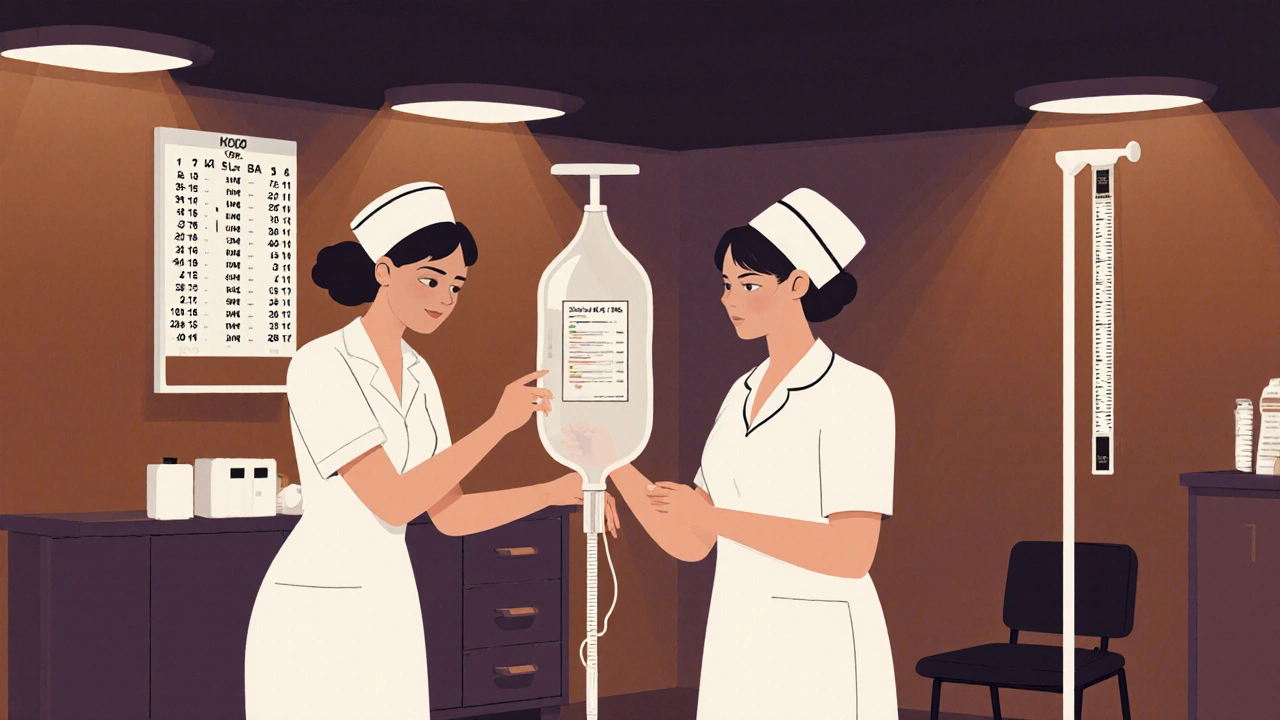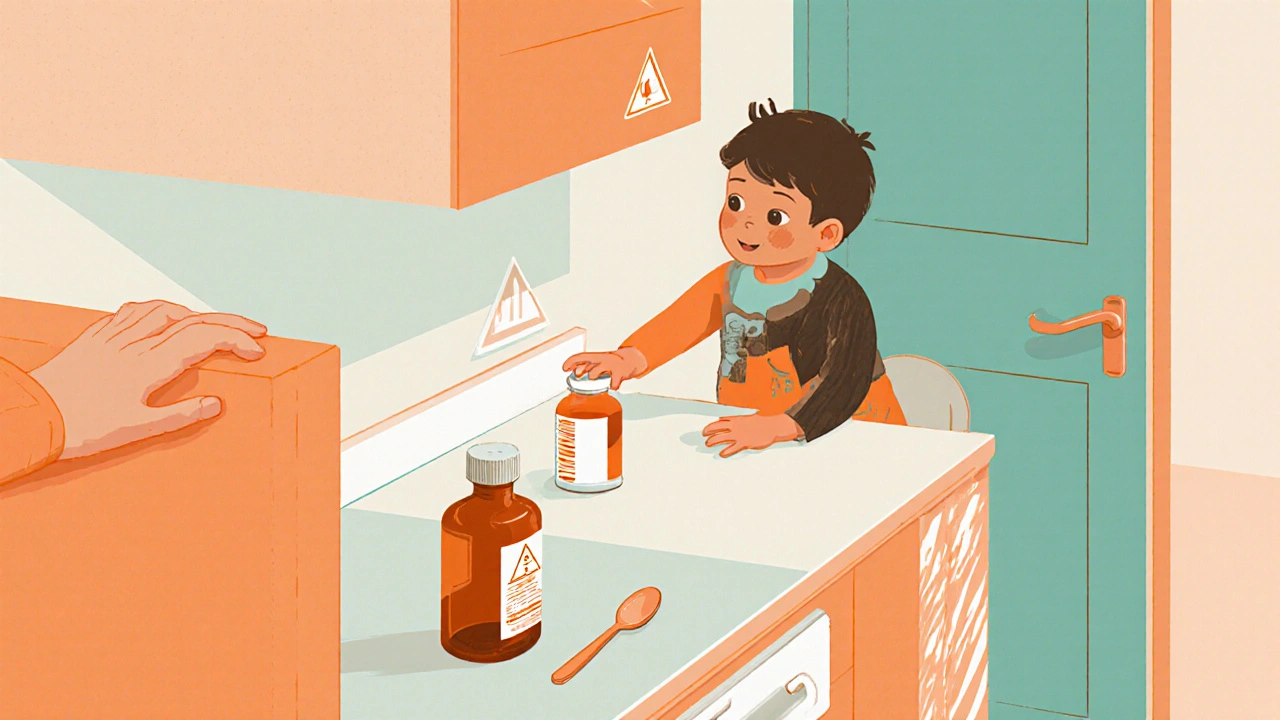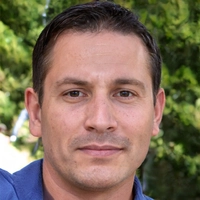Pediatric Medication Dose Calculator
Why This Matters
Every year, 50,000 children under age 5 end up in emergency rooms due to medication errors. Common mistakes include using teaspoons instead of milliliters and weight conversion errors.
Did you know? A single teaspoon (5mL) of medicine is five times the dose of a single milliliter. Using the wrong measuring tool can cause serious overdose.
Important Safety Tips
- Use only milliliter (mL) dosing tools - Never use teaspoons or tablespoons
- Store medicine out of sight and reach - Not in pill organizers or kitchen counters
- Check the label every time - Even if you've given it before
- Never say medicine is candy - This teaches dangerous associations
Every year, 50,000 children under age 5 end up in emergency rooms because they got into medicine they weren’t supposed to. Many of these cases aren’t accidents-they’re preventable mistakes. The truth is, giving medicine to a child isn’t just giving less of what you’d give an adult. It’s a completely different science. And when it goes wrong, the consequences can be deadly.
Why Kids Are So Vulnerable to Medication Errors
Children aren’t small adults. Their bodies process drugs differently. A baby weighing 3 kilograms needs a completely different dose than a 60-kilogram teenager. That’s a 20-fold difference in body weight, and even a tiny miscalculation can turn a safe dose into a lethal one.Doctors and pharmacists know this. But in hospitals that rarely see kids-say, a community hospital with fewer than 100 pediatric patients a year-errors are 3.2 times more common than in children’s hospitals. Why? Because staff aren’t used to it. They don’t think in kilograms. They don’t have the right tools. And sometimes, they assume a child’s dose is just a fraction of an adult’s.
Then there’s the body’s ability to handle drugs. A child’s liver and kidneys are still developing. That means they can’t break down or flush out medications the way adults can. A drug that’s perfectly safe for a grown-up might build up in a toddler’s system and cause toxicity-even at the "correct" dose.
And here’s the silent danger: kids can’t tell you when something’s wrong. A 2-year-old doesn’t say, "My stomach hurts" or "I feel dizzy." They cry, they get sleepy, they stop eating. By the time a parent notices something’s off, it might be too late.
The Most Common (and Deadly) Mistakes
Most pediatric medication errors aren’t about giving the wrong drug. They’re about giving the wrong amount.
- Using a teaspoon instead of a milliliter: 1 teaspoon = 5 mL. Give a child 5 mL of medicine thinking it’s 1 teaspoon, and you’ve given them five times the dose.
- Using a tablespoon instead of a teaspoon: That’s a threefold overdose right there.
- Converting pounds to kilograms wrong: If a child weighs 20 pounds and you mistakenly think that’s 20 kilograms, you’ve doubled the dose. This mistake happens more often than you’d think.
And it’s not just prescription drugs. Over-the-counter cough syrups, children’s acetaminophen, and even vitamins can be deadly in small amounts. A single adult-strength opioid pill can kill a toddler. A few prenatal vitamins can cause iron poisoning. A child doesn’t need much to overdose.
One study found that 45% of pediatric pill ingestions happened because the medicine was taken out of its original child-resistant bottle. Parents thought they were being helpful-keeping pills in a pill organizer for convenience-but that removed the safety layer. And if the cap wasn’t fully closed? A child can open it in under 30 seconds.
What Hospitals Are Doing Right
Children’s hospitals have learned the hard way. Now, they follow strict rules:
- Kilograms only: No pounds. No conversions. Every child’s weight is recorded and used in kilograms.
- Standardized concentrations: All IV medications for kids come in the same strength. No more confusion between 1 mg/mL and 10 mg/mL.
- Two-person checks: For high-risk drugs like sedatives or heart medications, two trained staff members must independently verify the dose before giving it.
- Distraction-free zones: Nurses prepare medications in quiet areas, away from phones and chatter. One distraction can cost a child’s life.
- Length-based dosing tools: If a scale isn’t available, they use a special tape measure to estimate weight based on length. It’s not perfect, but it’s better than guessing.
These aren’t suggestions. They’re standards from the American Academy of Pediatrics. And hospitals that use them have seen 85% fewer medication errors after training staff.

What Parents Need to Do at Home
Hospital protocols won’t help if the medicine is sitting on the kitchen counter at home.
Store everything up and away. Not on a high shelf. Not in a cabinet above the sink. Not in a purse. Not in a drawer with toys. Out of sight and out of reach. The CDC says 75% of poisonings happen because parents thought the storage spot was "safe." It wasn’t.
Never say medicine is candy. It’s tempting. "Here, sweetie, this is like juice!" But that teaches kids to associate pills with treats. One in every seven accidental ingestions happens because a child thought medicine was candy.
Use only milliliter (mL) dosing tools. Ditch the teaspoons and tablespoons. Use the syringe or cup that came with the medicine. If it didn’t come with one, ask the pharmacist for one. They’re free.
Check the label every time. Is it the right drug? The right dose? The right time? Don’t rely on memory. Even if you gave it yesterday, read the label again.
Treat everything like medicine. Diaper rash cream? Eye drops? Liquid vitamins? All of them can poison a child. Store them the same way you store Tylenol.
Use pictograms. If instructions are confusing, ask for a picture-based dosing sheet. Studies show they improve accuracy by 47%-especially for parents with low health literacy.
What You Should Never Do
- Never give OTC cough or cold medicine to a child under 6. The FDA and American Academy of Pediatrics agree: they don’t work and they’re dangerous.
- Never use adult medicine for a child. Even if you cut it in half. The formulation, fillers, and dosing aren’t designed for kids.
- Never leave medicine in the car. Heat and humidity can change how drugs work-and kids can break windows.
- Never ignore expiration dates. Expired medicine can lose potency or break down into harmful chemicals.

The Big Picture: It’s a System Problem
Pediatric medication safety isn’t just about being careful. It’s about design. It’s about training. It’s about culture.
The FDA now requires new pediatric drugs to come in standardized concentrations. That’s huge. It means fewer errors from the start.
The CDC’s PROTECT Initiative pushes for teach-back: after explaining how to give medicine, the provider asks the parent to repeat it back. If they get it wrong, they explain again. This cuts errors by 35%.
And yet, many pharmacies still dispense liquid medicine in teaspoons. Many doctors still write prescriptions in pounds. Many parents still keep medicine in the bathroom cabinet.
Change is happening-but it’s slow. And while the system catches up, parents and caregivers need to be the last line of defense.
What to Do If Something Goes Wrong
If you think your child got into medicine-even if they seem fine-call Poison Control immediately: 800-222-1222. Don’t wait. Don’t watch. Don’t try to make them throw up. Call.
Program that number into your phone. Save it as "Poison Help." Do it now. It takes 10 seconds. It could save a life.
And if you’re a healthcare provider? Ask for training. Push for standardized protocols. Don’t assume someone else is handling it. Pediatric safety isn’t optional. It’s essential.







Sarah CaniCore
30 October 2025 - 18:03 PM
This whole post is just fear-mongering dressed up as public service. Kids get into medicine all the time and most of them are fine. Parents are way too paranoid these days.
RaeLynn Sawyer
31 October 2025 - 01:32 AM
My cousin’s kid swallowed half a bottle of gummy vitamins. He’s fine. Stop scaring people.
Janet Carnell Lorenz
1 November 2025 - 07:57 AM
Y’all need to chill. I’m a nurse and I’ve seen this stuff up close. The real issue isn’t parents being scared-it’s hospitals and pharmacies still using teaspoons and pounds. I’ve had to correct prescriptions written in lbs more times than I can count. Get the right tools, use mL, store meds out of reach, and you’re 90% there. Seriously, it’s not rocket science.
And yeah, I know you think your cabinet is "safe"-I’ve seen the pics. Medicine next to the toothpaste? In the purse? That’s not safety, that’s a toddler treasure hunt.
Geoff Colbourne
1 November 2025 - 23:31 PM
Oh here we go again-the "pediatric medication safety industrial complex." You know who really causes these errors? The FDA pushing for standardized concentrations while letting Big Pharma slap 10 different formulations on the same drug. And don’t get me started on how pharmacies still give out measuring cups that say "1 tsp = 5 mL" but the actual cup holds 6.5. It’s all a scam to sell more syringes.
My kid took a whole bottle of Children’s Tylenol last year. We didn’t even call Poison Control. He slept for 12 hours and woke up asking for pancakes. That’s what happens when you trust your kid’s body instead of some bureaucratic checklist.
Daniel Taibleson
2 November 2025 - 02:26 AM
While I appreciate the intent of this article, I must note that the emphasis on institutional protocols overlooks the systemic underfunding of pediatric emergency services in rural and community hospitals. Without adequate staffing, training, or access to pediatric-specific formularies, even the most diligent provider is operating at a disadvantage. The 85% reduction in errors cited is impressive-but it applies almost exclusively to tertiary care centers. The real crisis lies in the 70% of pediatric ER visits occurring outside these environments.
Standardized concentrations are necessary, yes, but they’re meaningless if the nurse preparing the dose has never seen a child under five before. We need policy reform, not just checklists.
Jay Williams
3 November 2025 - 23:09 PM
I’ve spent 18 years working in pediatric pharmacy, and I can tell you this: the most dangerous thing isn’t the medicine-it’s the assumption that because something is "over-the-counter," it’s automatically safe for kids. I’ve seen toddlers admitted with liver failure from repeated doses of children’s ibuprofen because the parent thought "it’s just like adult Tylenol, but less."
And yes, I know people think it’s overkill to store everything in a locked cabinet. But here’s the math: 75% of ingestions happen in the home. Of those, 45% occur because the bottle wasn’t child-resistant. And of those, 60% were opened because the cap wasn’t fully tightened. That’s not negligence-it’s ignorance. And ignorance kills.
Let me be clear: I’m not blaming parents. I’m blaming a system that lets pharmacies dispense liquid medicine in teaspoons. I’m blaming a culture that tells parents to "use a spoon if you don’t have a syringe." I’m blaming doctors who write "5 mL" but don’t follow up to make sure the parent knows what that looks like.
The solution isn’t more fear. It’s more clarity. More training. More access to free dosing tools. More teach-back. More standardization. And yes-more accountability. If you’re a provider, ask for the pediatric protocols. If you’re a parent, ask for the syringe. If you’re a pharmacist, don’t hand out a measuring cup that’s marked in both tsp and mL-it’s a trap.
And if you’re reading this and thinking "my kid’s fine, I’ve never had a problem"-good. But that doesn’t mean the system is working. It just means you got lucky. Don’t count on luck next time.
Julisa Theodore
4 November 2025 - 15:53 PM
Medicine isn’t the problem. Control is. We’ve turned parenting into a compliance test. You’re not supposed to store it in the cabinet? Fine. But why? Because someone got hurt once? Or because we’re scared of chaos?
What if kids were allowed to learn from mistakes? What if we stopped treating them like fragile glass animals? Maybe if they tasted that gummy vitamin once and threw up, they’d never touch it again. Instead, we lock it away like it’s plutonium. And then wonder why they sneak into the medicine cabinet when we’re not looking.
Maybe the real danger isn’t the pill. It’s the paranoia.
Jamie Gassman
5 November 2025 - 16:56 PM
EVERY SINGLE ONE OF THESE "SAFETY PROTOCOLS" IS A LIE. Do you know what the CDC and AAP won’t tell you? That the entire pediatric medication system was engineered by pharmaceutical lobbyists to force parents to buy branded syringes and "child-safe" bottles that cost 300% more than regular ones.
My daughter swallowed a whole bottle of Children’s Motrin in 2019. We didn’t call Poison Control. We gave her milk and put her to bed. She woke up fine. The hospital said it was a miracle. I say it was proof that the system is broken. Why do we need two-person checks for a child’s cough syrup? Why do we need a tape measure to estimate weight? Because the system wants you dependent on them.
And don’t even get me started on the fact that every single one of these "safe" medicine bottles has a tiny, barely visible crack on the rim where a toddler can pry it open with a butter knife. That’s not safety. That’s a joke. They’re designed to look safe. Not to be safe.
They’re selling you fear. And they’re selling you the solution. Pay up. Trust them. Don’t think. Just follow the rules. That’s the real poison.
Michael Kerford
6 November 2025 - 23:32 PM
Yeah, yeah, I’ve seen this post before. Same old, same old. But here’s the truth: if you’re still using teaspoons to dose your kid, you’re probably also leaving the stove on and letting your toddler run around with scissors. This isn’t about medicine. It’s about basic parenting skills. Stop blaming the system. Start being responsible.
Daniel Taibleson
8 November 2025 - 09:55 AM
Actually, the point about teach-back being 35% more effective? That’s backed by a 2021 JAMA Pediatrics study. And it’s not just about repeating words-it’s about visual confirmation. I’ve watched parents nod along, then go home and give 10 mL thinking "a little more than a spoon" is fine. The teach-back isn’t for them to parrot-it’s to reveal their misunderstanding. That’s why it works.
And yes, I know the system’s flawed. But that’s why we push for change. Not because we’re scared. Because we care.